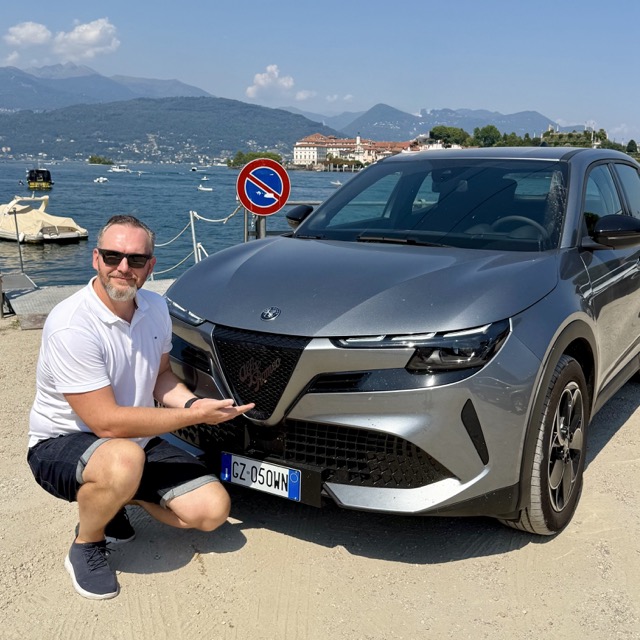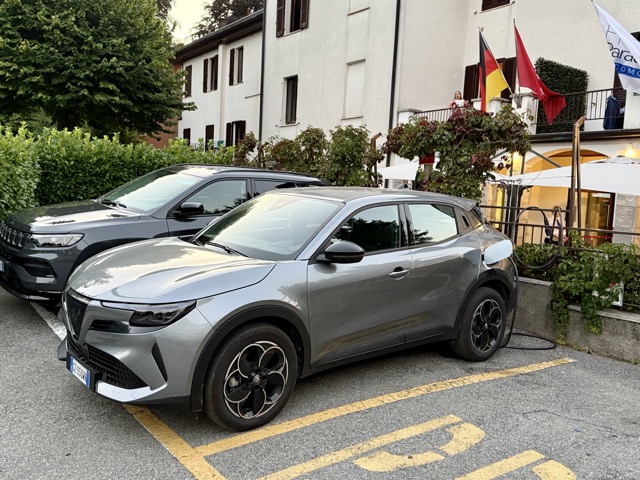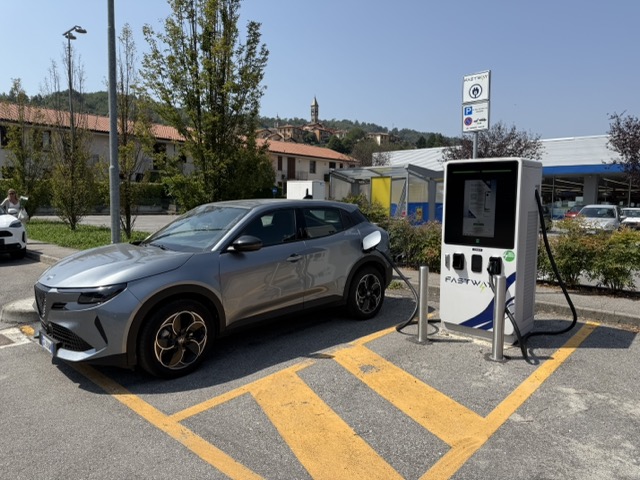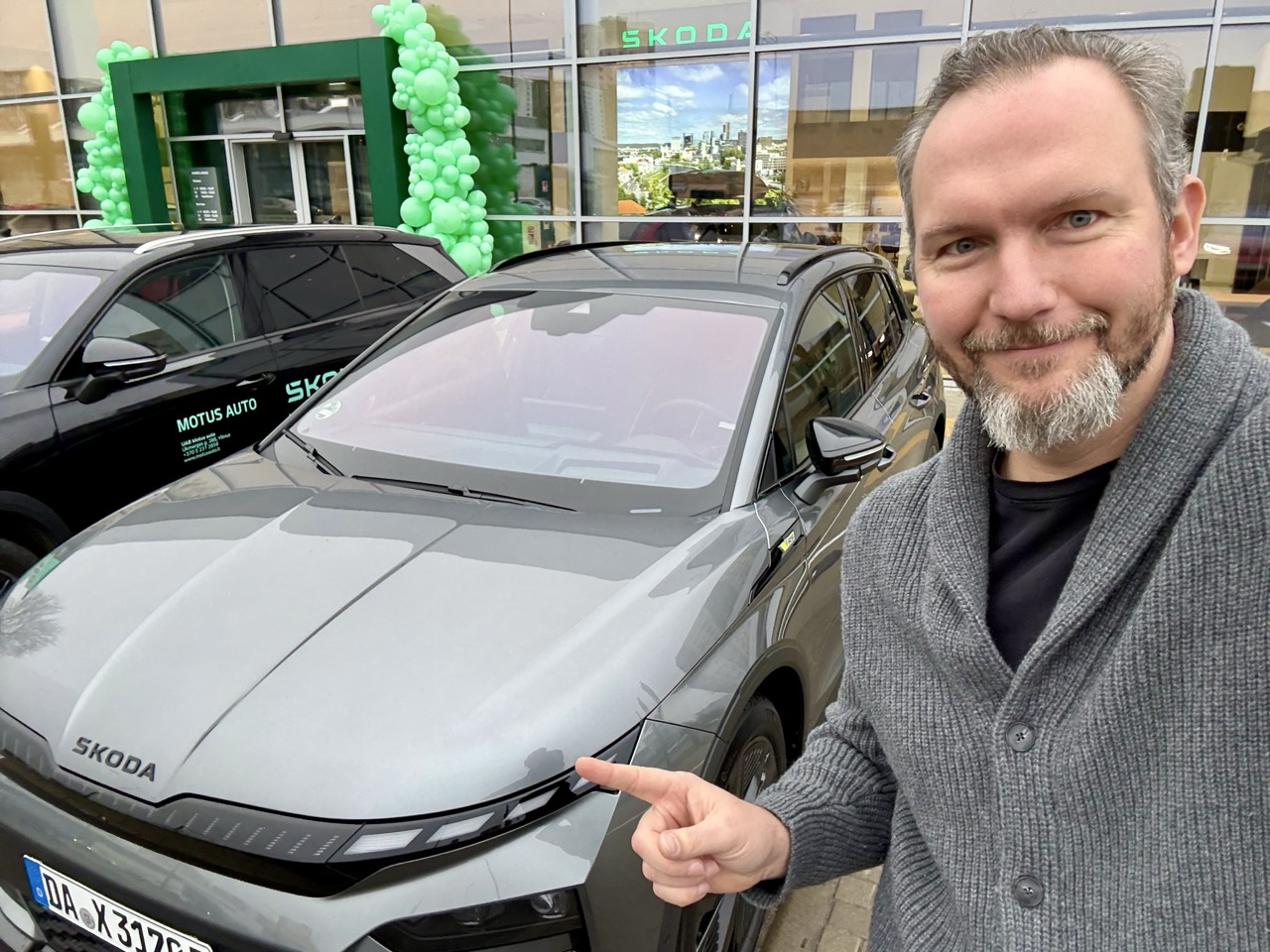

An EV Trip in Italy
Risk or Convenience?
When traveling abroad, we usually choose comfort and practicality. Until now, I was also inclined to rent only cars with internal combustion engines – after all, distances are long, adventures many, and nobody wants to waste time at charging stations. However, a three-day trip to Italy showed me that an electric car can be not only a realistic option, but also a very enjoyable one.
Choosing the Car
Even while still in Lithuania, I noticed that most rental points offered EVs with fairly modest batteries. Interestingly, rental prices were often lower than for a similar internal combustion car – and in those cases, you usually end up with a manual gearbox. An automatic ICE car typically costs even more.
If you want an EV with a bigger battery, the most common option is a Tesla, but the price is already in the premium range. So I opted for a mid-range EV – the Alfa Romeo Junior EV (a twin of the Peugeot e-2008 and Opel Mokka-e) with a 54 kWh battery. The car was new, rare, and eye-catching – people would even stop to take photos of it.
First Test
Landing in Milan, the first surprise awaited me – the car’s battery was only 60% charged. Rental employees admitted they only charge cars using regular wall sockets, since they don’t have proper charging stations. Still, the conditions were flexible – you could return the car with an empty battery and only pay for the difference from the initial 60%. The kWh price worked out to about €0.70, which isn’t bad.
Charging at Hotels
Over three days, we stayed at two hotels. Both (by coincidence) offered EV charging, but the pricing was very different:
First hotel – €35 fixed fee, regardless of how much electricity you use. Since the battery was still about half full, I decided not to charge.
Second hotel – €20 for the entire night. By the time we arrived (after climbing nearly a kilometer in altitude), the car had only 15% left, so this option made sense.
Still, another surprise: instead of the promised 11 kW, the car only charged at about 2.5 kW – basically like a household socket. Overnight it went from 15% to just 55%. After discussing with the hotel, they agreed to let me charge again the following night under the same €20 fee. We left for the airport with about 65% charge.
The most fun experience was regeneration while descending from the mountains. On each 7 km downhill stretch, the battery would gain another 4–5%, and I hardly needed to use the brakes. It was not just efficient – it was fun.

Public Chargers
Although Bergamo Airport was only about 60 km away and we didn’t need a stop, I wanted to test the public charging network. Using Waze navigation, I selected a few charging points along the route.
The first one didn’t work – payment required either a special card or downloading an app. Instead, I used my Volkswagen We Charge app, which I normally use to charge my ID.4 in Lithuania. Nearby we found a modern charger – even with Lithuanian language in the menu – and had no problem charging.
The price, however, was high: nearly €1/kWh without a subscription plan. With a monthly plan, the price would have been significantly lower.
What’s Worth Knowing?
This trip showed me that traveling by EV in Italy is completely possible and even convenient, but you should keep in mind:
Rental companies usually offer EVs with smaller batteries.
Hotel charging prices can vary greatly – check in advance.
The easiest way to pay is by using your EV manufacturer’s charging app – it works across many European countries.
If you plan to charge often, a monthly plan will save you money.
Navigation apps (Google Maps, Waze) already have integrated charging station listings, so finding one is easy.
Conclusion
The EV proved itself. The Alfa Romeo Junior EV was agile, fun, and quiet, with regeneration in the mountains adding extra enjoyment. Charging required a bit of flexibility, but overall it wasn’t a real problem.
Next time, I’ll confidently choose an EV even for a family trip – both for the driving experience and the convenience.

Other articles in this category: EV News , or by tags: #BESTEV4ME, #Tadas_Ratkevicius

